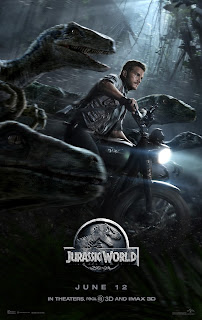Directed By: Chad Archibald
Starring: Elma Begovic, Annette Wozniak, Denise Yuen
Tag line: "This may sting a little"
Trivia: The director, Chad Archibald, got married in Spain the day the movie had its Spain premiere, and he and his wedding party attended the screening
Rumor has it that, during its premiere at the 2015 Fantasia International Film Festival, some of the scenes in director Chad Archibald’s horror / thriller Bite so disgusted audience members that a few people actually got sick (one guy supposedly passed out while watching the movie). When I first heard this, I assumed it was nothing more than a cheap publicity stunt, a way to generate buzz for the film, but the director and one of its stars (who were there at the time) swear it happened.
Naturally, this piqued my interest. Was Bite really as gross as all that?
As the movie opens, bride-to-be Casey (Elma Begovic), is in Costa Rica with her best friends Jill (Annette Wozniak) and Kirsten (Denise Yuen), celebrating her last few days of freedom before she and fiance Jared (Jordan Gray) tie the knot. During the trip, Casey expresses doubts about her upcoming nuptials, and is worried that she’s not quite ready to commit. So, to get her mind off her troubles, she and her 2 companions go for a swim in a remote stream, and while there Casey is bitten on the leg by what she thinks is an underwater bug.
When she returns home, Casey picks up where she left off, inviting Jared over to her apartment for romantic dinners and feuding with her soon-to-be mother-in-law (Lawrene Denkers), who doesn’t think she’ll make a good wife for her son. But as she struggles with the decision of whether or not to postpone the wedding, Casey notices the bite mark on her leg is getting bigger, and is much more painful than it was originally. As she’ll soon discover, it was no ordinary insect that attacked her; whatever bit Casey is causing her to undergo a physical change. In essence, she is transforming into a giant bug!
To answer the above question: yes, Bite is, at times, a very gross movie. Once Casey begins to “change”, she spews acidic saliva, lays hundreds of eggs, and starts looking and acting like an insect (her hair falls out and her head twitches uncontrollably). It’s here that Bite proves itself to be a nifty horror flick, offering up one disturbing image after another (a scene where Casey’s fingernail falls off is particularly difficult to sit through). In addition, Bite has its share of gruesome kills (a few poor souls venture into “bug” Casey’s apartment uninvited), and kudos to the filmmakers for going the practical route as opposed to CG (both Casey and her “lair” look pretty convincing).
Unfortunately, as good as some of these moments are, they’re not enough to make up for the rest of the film, which, truth be told, is fairly awful, The opening, when Casey and her friends are in Costa Rica, is structured like a found footage movie (video taken on someone’s phone), and features so many clichés and so much heavy-handed exposition that it actually made me cringe. Equally as bad is a brief dream sequence (one of the stupidest I’ve ever seen) that occurs right before Casey’s metamorphosis; and the characters are so poorly developed that we never fully understand what it is that motivates them. This is, in part, a weakness of the script, but the actors have to share some of the blame as well (though Elma Begovic does deliver a solid performance once the change happens).
So, while there are stretches of Bite that work as intended, the movie as a whole never comes together, and as a result I can’t really recommend it.
















